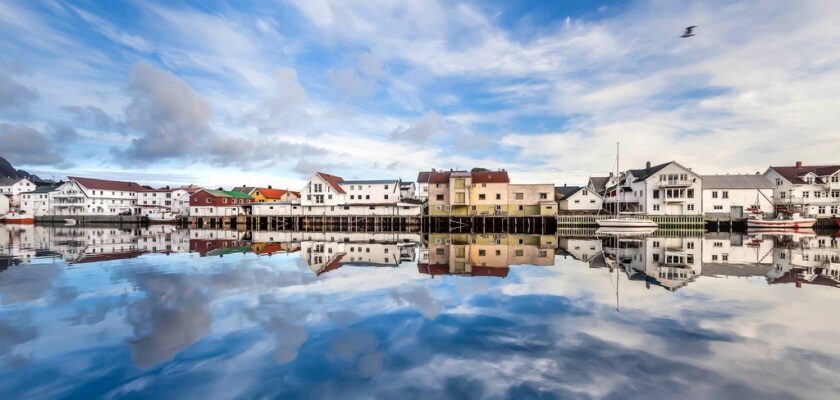Sognefjorden
Sognefjorden – “King of the Fjords”, this is the nickname of the largest fjord in Norway, its length is 204 km and its depth is 1308 meters. There are impregnable cliffs and walnut and apricot trees ripen in the mild climate of secluded bays.
.Roads are only along the northern shore of Sogne Fjord. However, any of the smallest villages in the fjord’s arms can be reached by ferry. In addition, car ferries run along many of the routes.
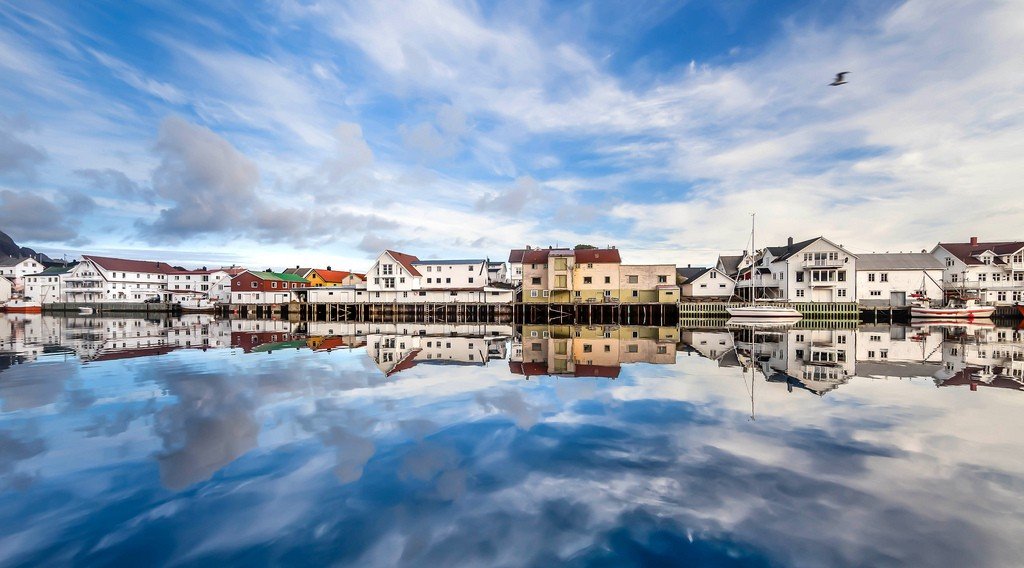
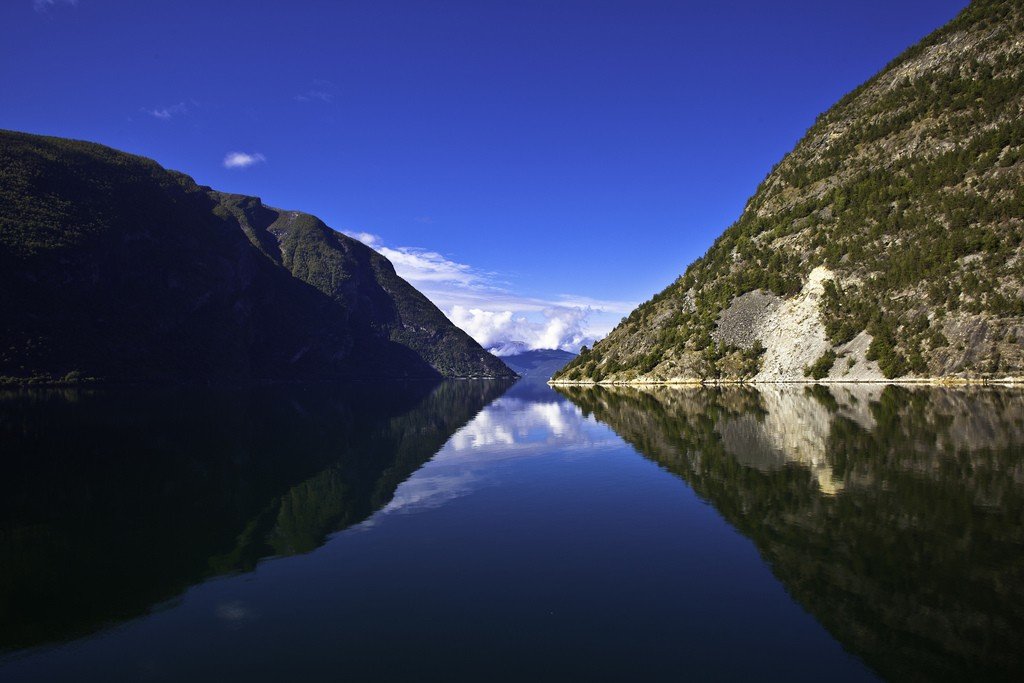
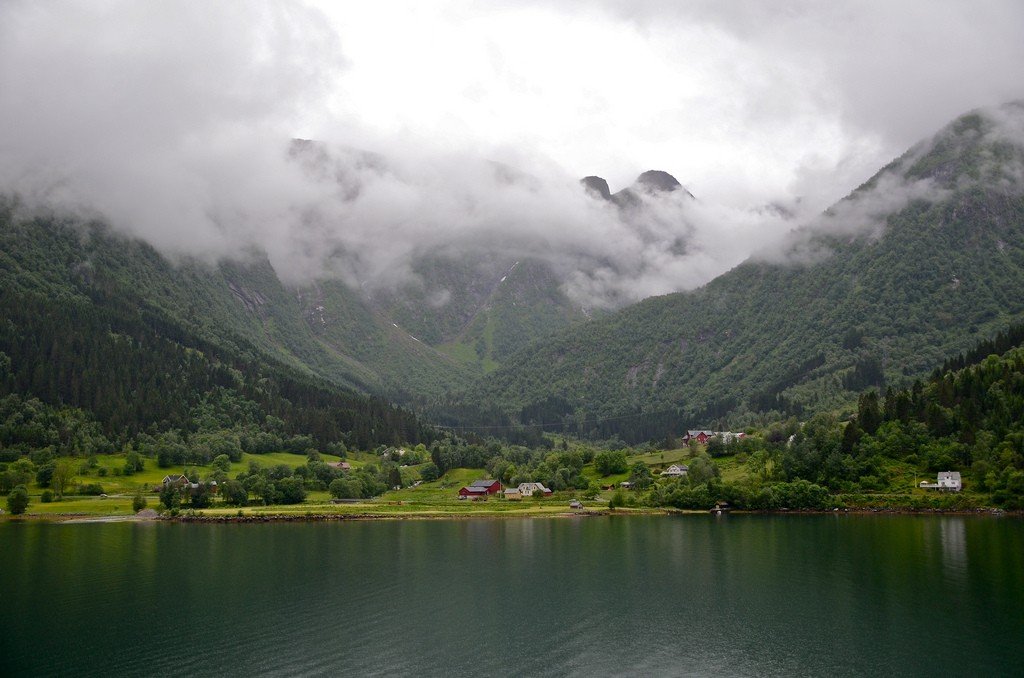

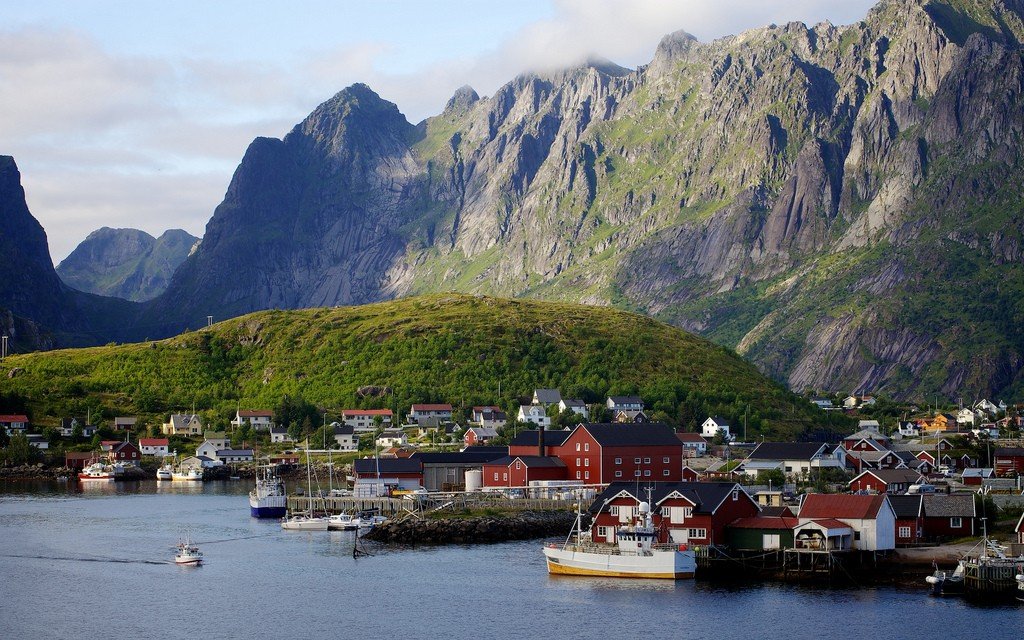
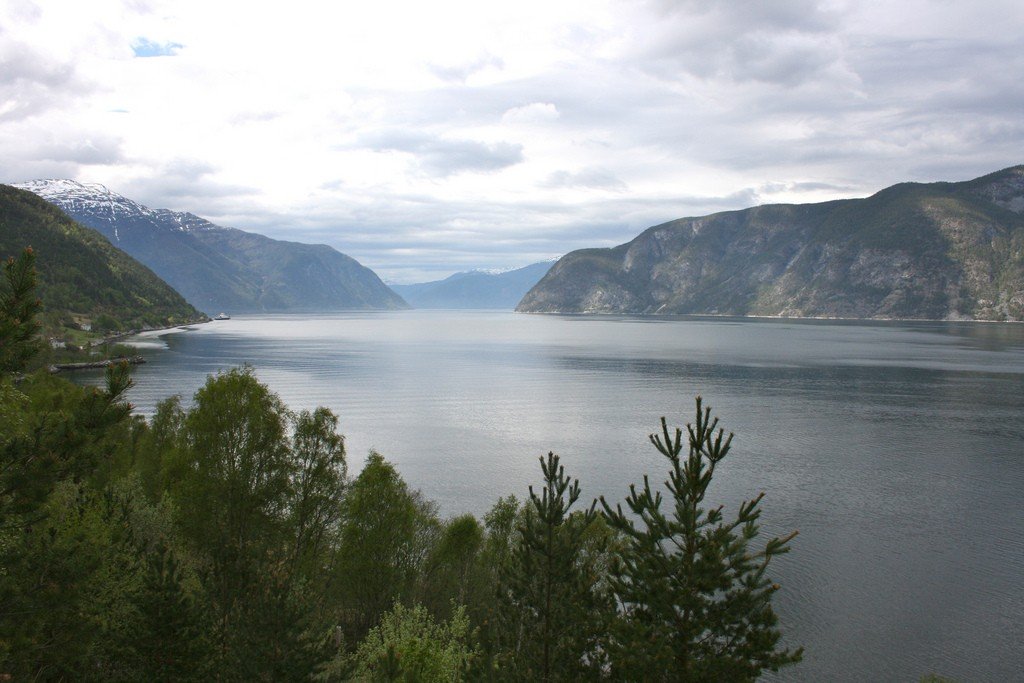
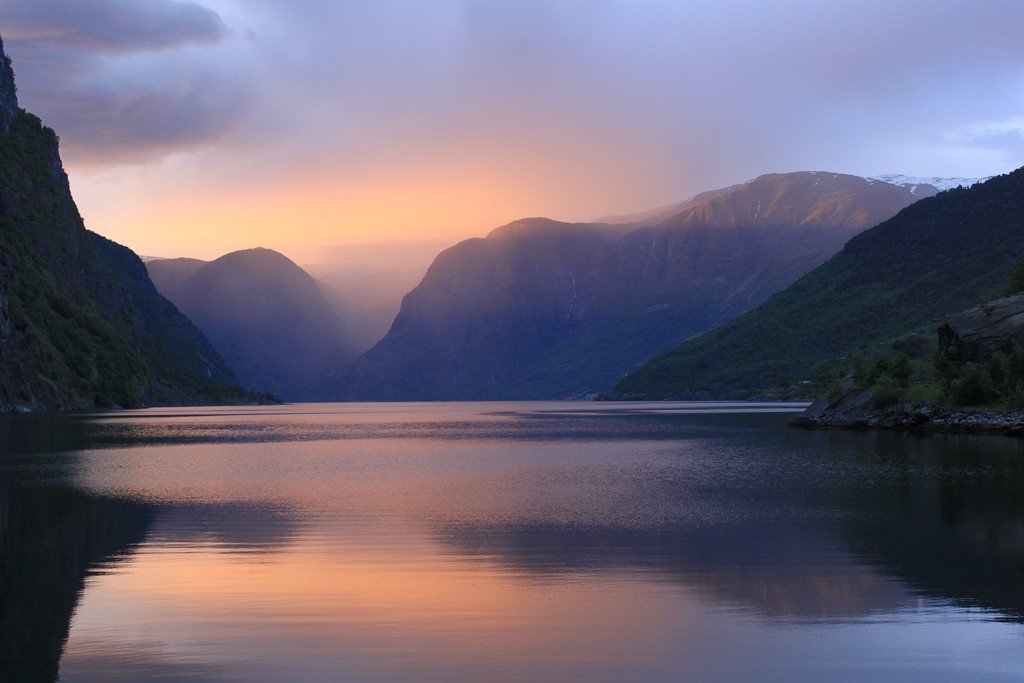
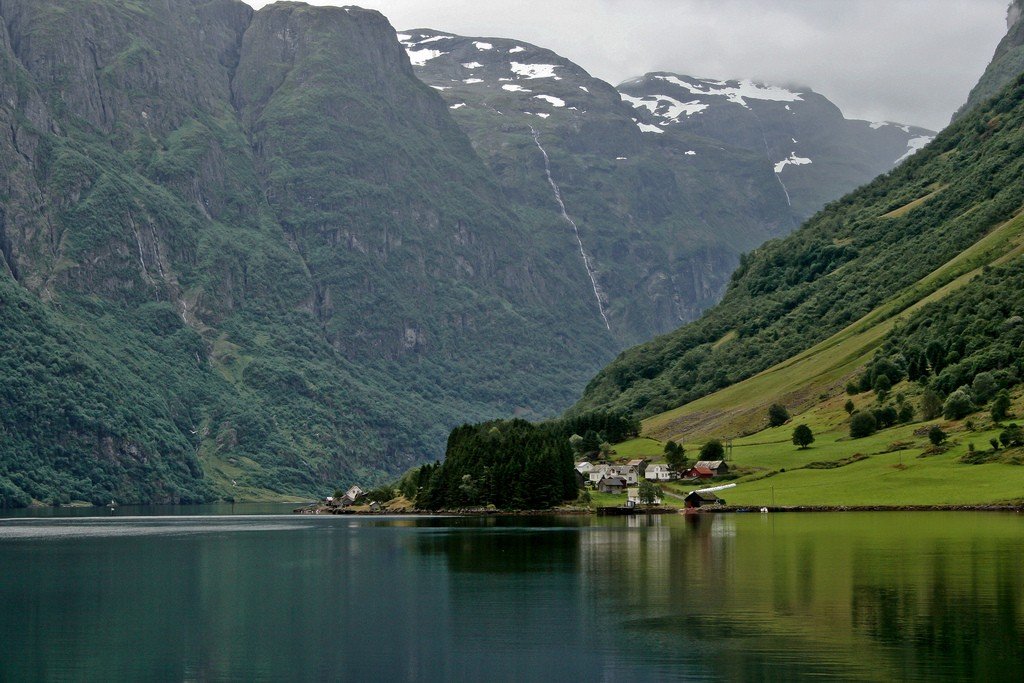
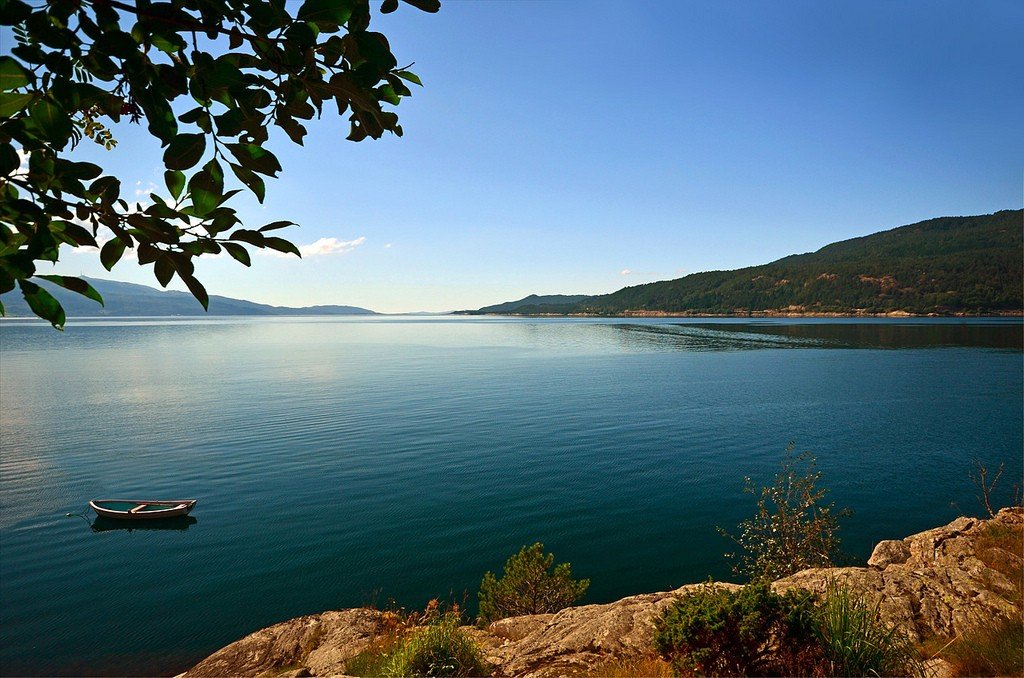
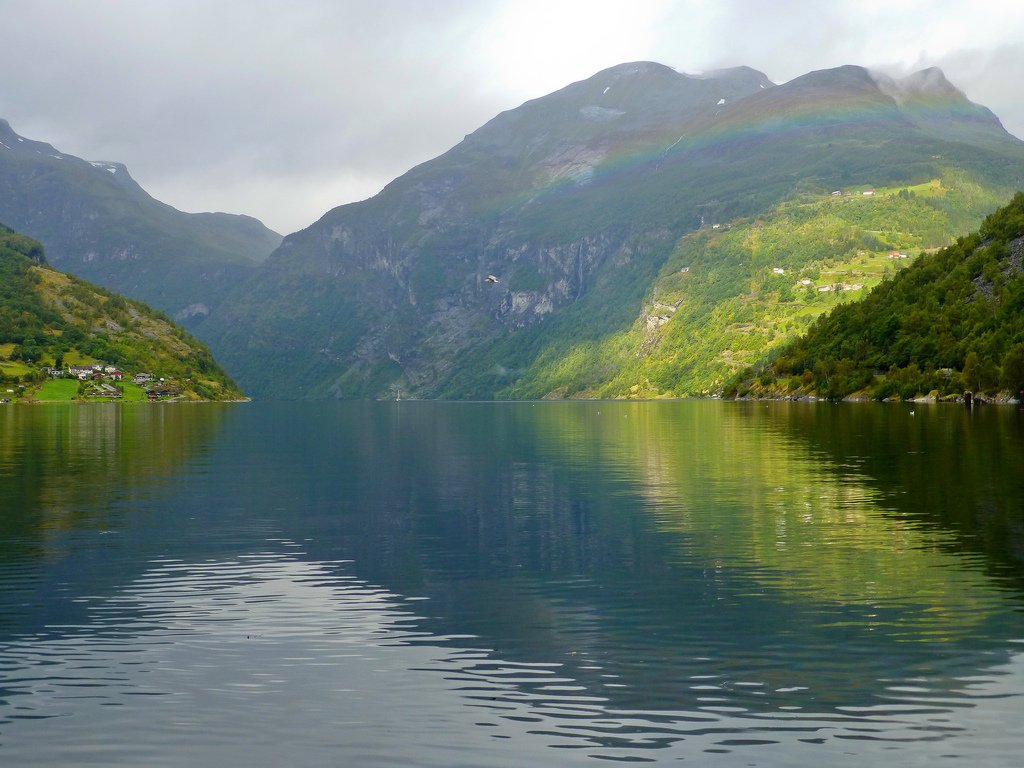
What to see in Sogne Fjord
Lavik
Sogne Fjord starts among the many skerries west of Rysjedalsvika. Soon the landscape changes: the steep mountains on both sides of the fjord become higher and higher. Lavik is the center in the west of Sogne Fjord with the picturesque estate of Amtmann Alvaren (1760). And 15 km away at the Breivik farmstead is the deepest point of the fjord (1308 m).
.Balestrand
By the Hoyanger tunnel (7.5 km) on the R 55 we arrive at the resort of Balestrann, since the end of the XIX century favored by the Germans and British. Among the town’s most famous guests is Kaiser Wilhelm II, who stayed at the magnificent Kvikne’s Hotel.
To see the beautiful Stavkirka in Hopperstad, you should cross the fjord by ferry from Vangsnes to Dragsvik. The west entrance of the church (1130) is decorated with a carved portal with a dragon. The arch, roof ridges and apse are reconstructed on the model of the stkarka in Borgunn.
.Фьерландс-фьорд
A detour to Fjærlandsfjord is highly recommended – north of Balestrand (pleasure boat to Mundal). Fjærlands Fjord (26 km) is one of the arms of the Sogne Fjord. North of the idyllic Fjærland (where, incidentally, a very interesting Glacier Museum is open) are the Suphellebre and Boyabre glaciers, both of which are tongues of the Jostedalsbre glacier.
.Leukanger
Along the winding northern shore, the R 55 leads through the horticultural region to Leikanger and to Hermansverk. Imagine: In May, there is still snow in the mountains, while down on the coast some 80,000 fruit trees are in bloom. Thanks to the Gulf Stream current, even walnuts, apricots and peaches ripen during the short summer.
.
Stavkirka in Urnes
Twelve kilometers north of Sogndal you can turn off to Svolvorn. The Walaker Hotel (1690) has its own art gallery – in a former barn (1863). From the wharf below the hotel, small boats leave every hour (a few cars are also taken on board) for Urnes, where you should see the 11th-century stakarka, built on a promontory on the eastern shore of the elongated Lustra Fjord (45 km). Climb up (20 min.) and you will see the oldest preserved stakarka in Norway, a UNESCO world cultural heritage. Especially interesting is the carving of the northern portal (1060), depicting the battle of lions, dragons and snakes intertwined, the pattern in the “Uriesian style” is equally magnificent. Inside the church, the columns with cuboidal capitals in Romanesque style decorated with ornamentation are curious (Opening hours: May-Sept. 10.30-17.30).
.Stavkira in Kaupanger
10 km southeast of Sogndal on the shore of the fjord lies Kaupanger, a major trading center in the Middle Ages. Tourists are attracted here by the Starka (ca. 1185). It has been rebuilt several times, but the inside has retained its original appearance. The arcades between the columns were restored in 1862. Fragments of two former religious buildings were found under the church, the oldest dating back to around 1000. (Opening hours: Ser. June-Sept. Aug. 10.00-17.30).
.Lerdal
.Those who want to see another stakarka can go to Laerdal (R 5, then E 16). At the entrance to the valley you will be met by the dormant town of Laedalsoyri (Laedalsoyri), in the center of which there are many wooden houses of the XVII century, protected by the state. Further the road goes through the picturesque gorge Svartegjel, laid in the rocks by the river Lerdal (by the way, unusually rich in salmon).
.Wild Salmon Center
The Norwegian Wild Salmon Center on the Lerdal River is the largest aquarium in the country. Here you can learn all about salmon: about its habitat and migration, as well as watch movies and exhibitions about this valuable commercial fish. Through huge portholes, visitors can observe salmon and sea trout in their natural habitat. In a special room, some salmon fishing techniques (e.g. overlapping) are demonstrated (Opening hours: June-Aug. 10.00-19.00; Sept. 11.00-17.00).
.Stavkirka in Borgunna
The Stavkirk in Borgunn at the other end of the Lerdal Valley is among the oldest and most beautiful in Norway. The ridges of the tiered roof are topped with dragon heads. Skillful wood carvings decorate both the portals and the almost windowless interior. The small church, black from the resin with which the boards were impregnated, was probably built in 1150. Meticulously restored, today it is the only wooden church in Norway that has survived unchanged since the early Middle Ages (apart from a single window, which was cut in later). Only the pulpit of the XVI century and the altar of the early XVII century have survived from the original interior. Powerful columns carry a skillfully made roof and separate the central nave from the side aisles. The Stavkirk in Borgunn is one of the main attractions in Norway, and it is often necessary to stand in a long queue at the entrance (Opening hours: May-Sept. daily, 10.00-17.00, ser. 10.00-17.00, ser. June-ser. Aug. daily. 8.00-20.00).
In 2005, a specialized tourist information center about Norway’s stakes was opened.
.Эурланис-фьорд
On the way back from Borgunn, you can drive to the extreme point of Aurlandsfjord through the longest tunnel in the world (24.5 km) between Lerdal and Eurlann. The entrance to Aurlandsfjord, the southern arm of Sogne Fjord (on board a ferry from Kaupanger or a pleasure boat), is an unforgettable experience: almost vertical cliffs, sometimes up to 1500 m high, stick out of the water.
.Flom Railway
South of Aurlandsvangen at the southern end of the Aurlanis Fjord at the exit of the Flamdal valley lies the tourist destination Flam. This is where the Flam Railway, a branch of the Bergen Railway that leads to Myrdal east of Voss, ends. The Flom Railway is widely known as one of the most fantastic railroad routes (1920-1940) – it is the steepest standard gauge railroad in the world. It is 20 km long and has an elevation difference of 864 meters. To overcome such a difference in a short section, the road was laid in a spiral through 22 tunnels. The trip from Flom to Myrdal lasts 50 minutes, the train goes slowly, stopping at the most beautiful places among high snow-capped mountains, rushing waterfalls and green meadows. From the middle of June to the middle of September the trains of the Flom road leave every hour, in the rest of the time – four times a day (regardless of the season). There are always plenty of people willing to take a ride on it.
.
Nærøy Fjord
The ferry from Kaupanger to Güdvangen (2 hours and 20 minutes) follows the beautiful Nærøy Fjord. If you are very lucky, you can even see seals. But even without seals, the journey through the Nærøy Fjord – the narrowest in Norway (up to 250 meters in some places) – is fabulously beautiful. At the end of the fjord stretches the picturesque place Gydvangen (there are buses from Voss to Gydvangen and back).
.Excursions
Pleasure boats run from Bergen to the eastern end of the fjord. See www.sognefjord.no
for the schedule.